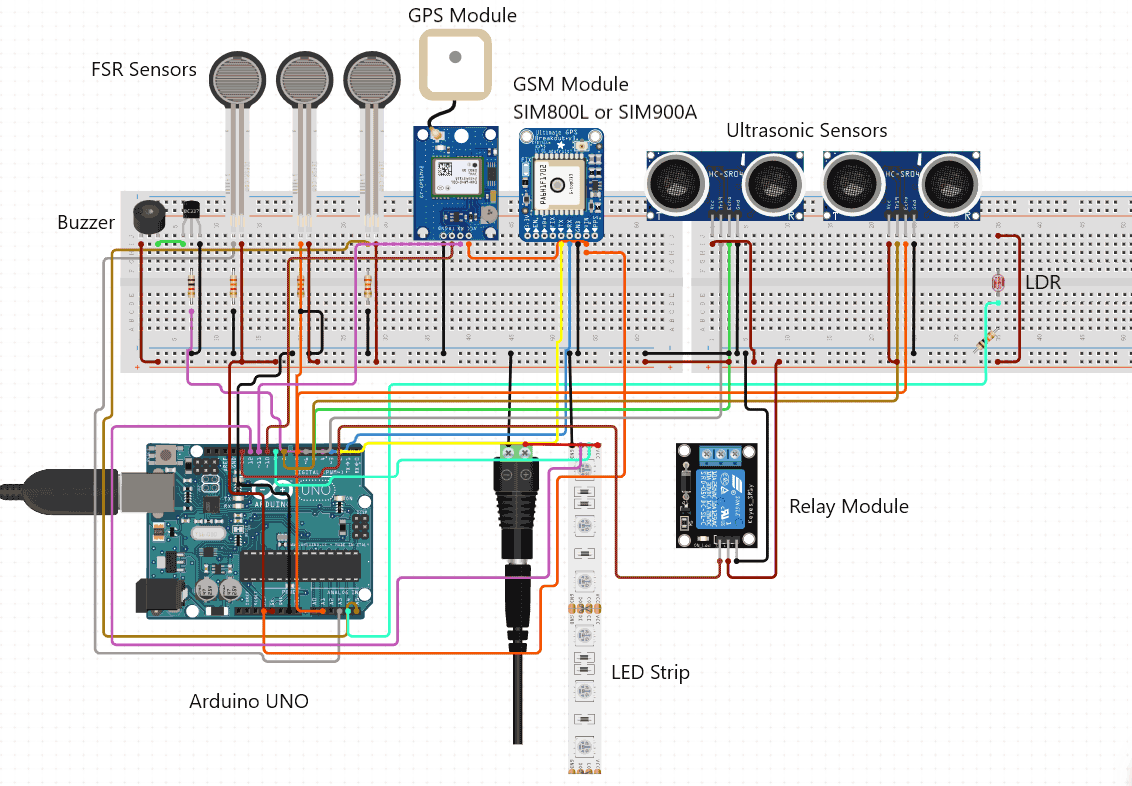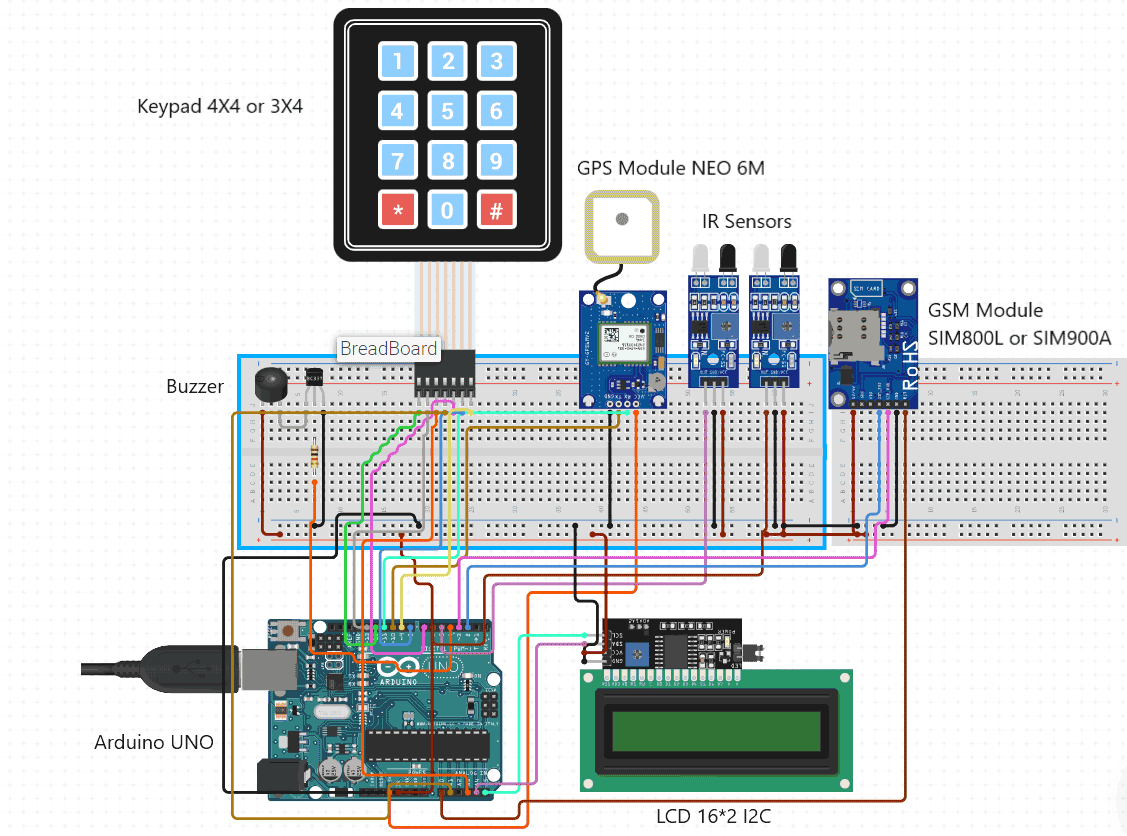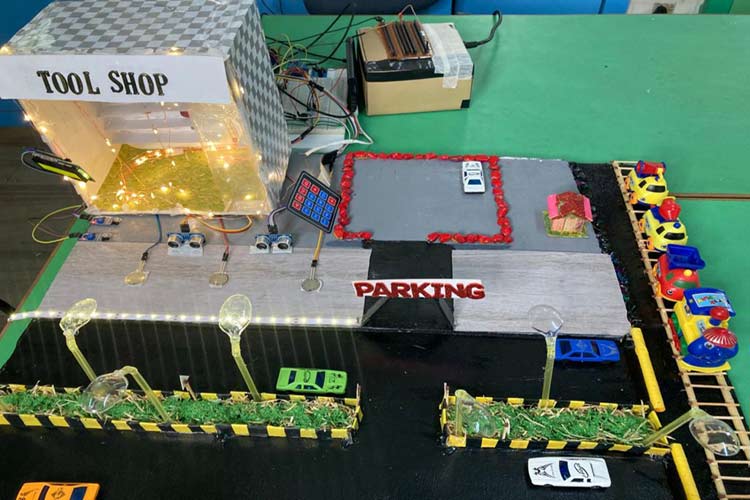
Coronavirus is the biggest health crisis in the history of humanity and the fight with it continues as new emerging variants like Omicron are at the brink of spreading, Moreover, according to a study conducted by a university in Japan, wearing a mask can only reduce 30% of the risk of getting Covid! Therefore, dealing with such a problem permanently on a very large scale requires a better solution and surprisingly we all know that solution! It is Social Distancing but unfortunately, most of us don't follow it. Either unconsciously or consciously we commit the mistake of not following on a day-to-day basis which ultimately leads to pandemic that we all are witnessing.
So, to deal with this problem we have made a system that would ensure that we all follow Social Distancing on the Streets as well as in the shops, malls, banks or any public places. Now, we all have seen circles drawn 6 feet apart on the streets, in public places. Our idea suggests that these circles on the streets and in various public places would be equipped with FSRs (Force Sensors) to sense the presence of the human beings and the gaps between 2 circles would be equipped with ultrasonic sensors. Now let us suppose that a person is standing in one of these circles and another person comes and stands very close to a person (in the gap) or in a position where Social/Physical distancing is not being followed, then this system's alert would automatically turn on and a buzzer would start beeping..... Now, the person standing in this gap or this position would have 10 seconds to move from this position, if he doesn't do so then an Alert Message would automatically be sent to the nearest police station along with the Location of the Street and the Circle Number closest to this person. Please note that this is just one scenario discussed, there are several cases or positions in which social distancing is not being followed on the streets and this system would cover most of them.
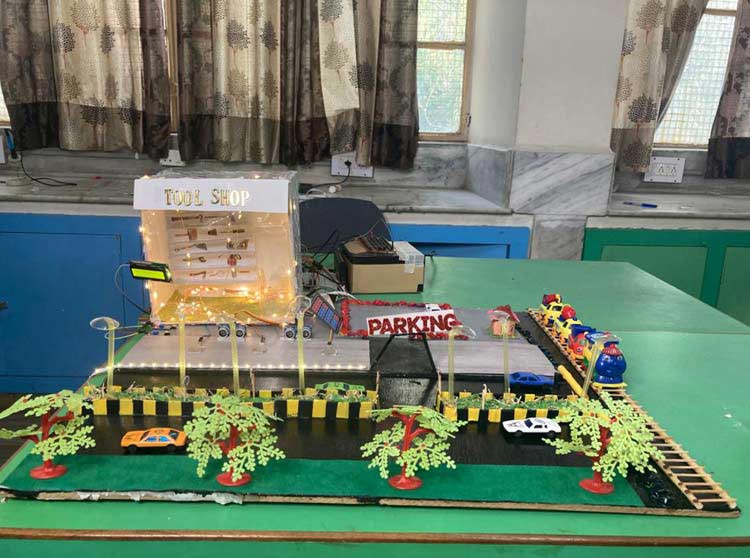
Another feature of this system is that the circles are equipped with LEDs which would automatically turn on during evening or night time with the help of LDR (Light Dependent Resistor) to ensure visibility of these circles during darkness or Night-Time. This system would be very helpful as obviously it would ensure Social Distancing but would also be very helpful for the police departments (our COVID WARRIORS) as they would not have to be present everywhere to monitor the Social distancing. Moreover, it would be helpful for us to as we sometimes unconsciously stand in a position where we commit this mistake so the buzzer installed would be useful to alert us as well (We have 10 seconds which is plenty before the Alert is sent to the police station. The Cost and the implementation is extremely low for this system which is only around 2500 rupees per 5-6 shop street. This would be further be reduced after manufacturing on a large scale. Along with the current use this system also has many future benefits as this can be used for any communicable disease in the future and can also generally be used once the pandemic is over.
Now if the value of the number of people inside the shop exceeds that entered by the shop owner an alert buzzer would go on and an alert message would be displayed on the LCD display along with the number of the people inside the shop. Now, if the extra people exit the shop within 30 seconds, then the Alert would go off else a message would be sent to the nearest police station with the Location of the shop along with the number of people inside it. Moreover, if suddenly a lot of people enter the shop i.e the value entered by the shopkeeper is exceeded by a very huge amount then the message would be sent instantly and the 30 second gap would be eliminated. Therefore, in short, this system would ensure that only a certain number of people are present in a public place which would help to mitigate huge crowds thus, avoiding the spread of Coronavirus. The Cost of this system is extremely low as well which is around 1500 rupees and would further be brought down after large scale manufacturing. Moreover, it is very easy to install and almost anyone can install it themselves hence, large-scale implementation would be easy. This system has various applications and can be installed in any public place to avoid crowds, like Marriage Halls, Local Shops, Large Malls, Railway Stations, and almost any crowded place. Therefore, both these systems together would ensure that spread of Covid or any communicable disease in the future is avoided both from the inside as well as on the streets. Hence, both these systems together would contribute towards the development of the Healthcare system of not just India but of the whole world! This is built with Arduino. For a better understanding, you can check out our previously built arduino based project.
We have also built some social distancing and people counter projects before,
- Raspberry Pi based Social Distancing Detector
- Visitor Monitoring System using Raspberry Pi
- Arduino Based Visitor Counter
Component Required for Social Distancing System
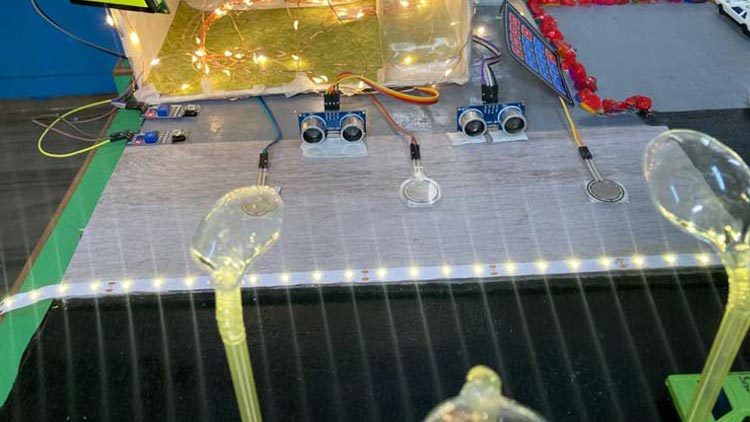
Project Used Hardware
- Arduino UNO,
- Force Sensors Resistors,
- Ultrasonic Sensors,
- NEO-6M GPS Module,
- GSM Module SIM900A or SIM800l,
- Buzzer, LDR,
- Relay Module,
- LED Strip,
- IR Sensors,
- 16*2 I2C LCD Display,
- 4*4 Keypad,
- Jumper Wires,
- Breadboards
Project Used Software
- Arduino IDE,
- SMS App,
- Google Maps
Project Hardware/Software Selection
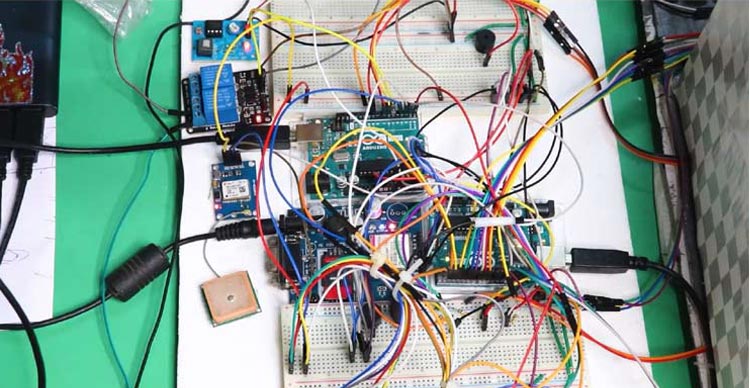
Software
We decided to use Arduino IDE for the coding of the project as we are most familiar with this software and have used it for many years and for several different projects. Moreover, it is very user friendly and easy to use with a very wide variety of libraries. Hence, it's our choice for coding for Arduino or any commonly available IO Boards.
Hardware
For the Hardware, we decided to use Arduino UNO due to its wide use and easy accessibility, cheap price along with the user-friendly experience, and easy to troubleshoot advantage. For the GPS Module, we went with NEO-6M as it is the most cheaply and readily and reliable Geo-positioning sensor. We went with other Sensors like the FSR and Ultrasonic ones again due to the same reasons and finally for the GSM Module we used SIM900A due to its reliability but SIM800l is also a good option for making the project more cost efficient, however, it does have its set of problems with voltage, continuous current supply, and connectivity. Other than that, for the IR sensors, we went for the most common module with a range of 30 cm. Other components include our 16*2 LCD display with I2C and the 4*4 Keypad which are again good reliable, cheap, and easy to access. One of the biggest reasons of using all these components is our familiarity with them which adds to the cheap cost making our ultimate goal successful which was to make the project as reliable as possible along with keeping the price as LOW as possible. Large Scale implementation would include slightly different models of these components, however, the concept would obviously remain the same.
If you are new with GPS and force sensor, please check basic interfacing of GPS with Arduino and how to get started with Force sensor here.
Circuit Diagram
Working and Explanation
So, now the question is that what’s the detailed working of this project? Well, to answer this question let’s take an example. Suppose that there is a footpath with shops on its right-hand side. Now, three circles are drawn on the footpath equipped with FSR sensors, and the gap between each one of them is covered by Ultrasonic Sensors I.e., 2 in this case. Now, suppose that a person comes and stands in the first circle and another person comes and stands in the second circle, the FSR Sensors identifies the presence of a being as there is a resistance created in the passage of electric pulses to the Arduino. Therefore, the Arduino converts this value into a readable analog one and counter-checks it with the value inserted in the program to verify the presence of a human being. Now, let us suppose that a third person comes and stands in between the first and the second person. As the person is standing in the gap the ultrasonic sensor senses a reduction in the distance with respect to the set threshold value in the program. This triggers the Alert System and the buzzer goes on and a timer of 12 seconds starts. The Ultrasonic sensor would be placed at a height of about 159 cm (5 feet 2.1 inches approx.) which is the average height of an Indian Citizen to ensure that this system is only triggered by the presence of a human being, not any street animal. Now, if the person in between the gap moves from this position in a time span of 12 seconds then the buzzer is triggered off but if not then an Alert Message along with the location of the street, the circle number is sent to the nearest police station.
Application
The applications of this system are almost every public place that you can imagine, from General Shops to Malls, to Banks, to Marriage Halls, Parties, Etc. Now let's move towards the second part of this system which is the Count System. The Social Distancing system is mainly used for the streets but what about small shops!? Well, to solve this we have developed a Count System which would ensure that only a certain number of people can enter the shop. Now first of all this system would include a Keypad which would be used by the shop owner to enter the number of people he wants to allow inside his/her shop at a time. He cannot enter a value greater than that issued in the Government Guidelines, if he does so the system would automatically reset. After entering this the system would start and would start counting the number entering and exiting the shop. This works even if the shop has 1 opening for both entry and exit.

